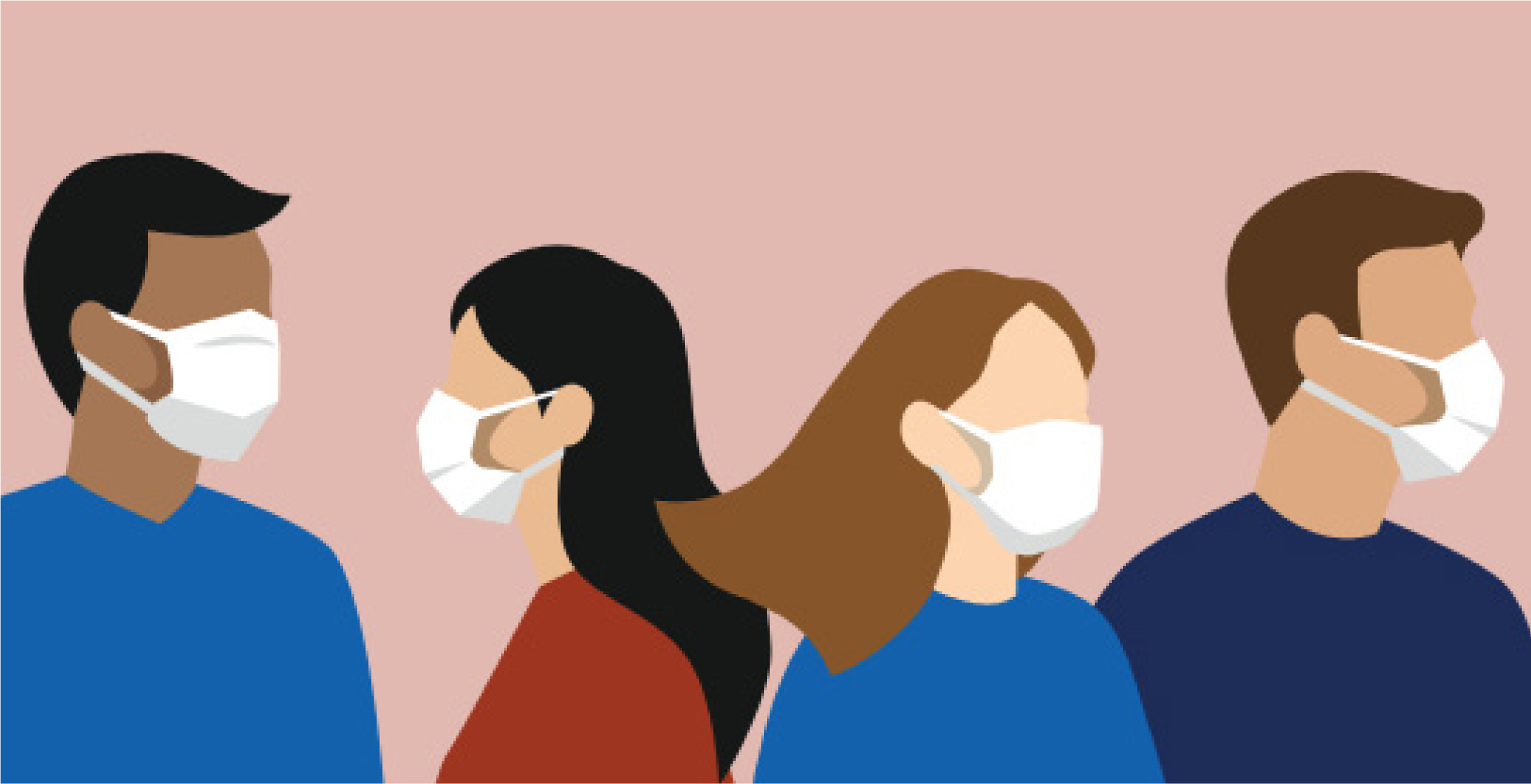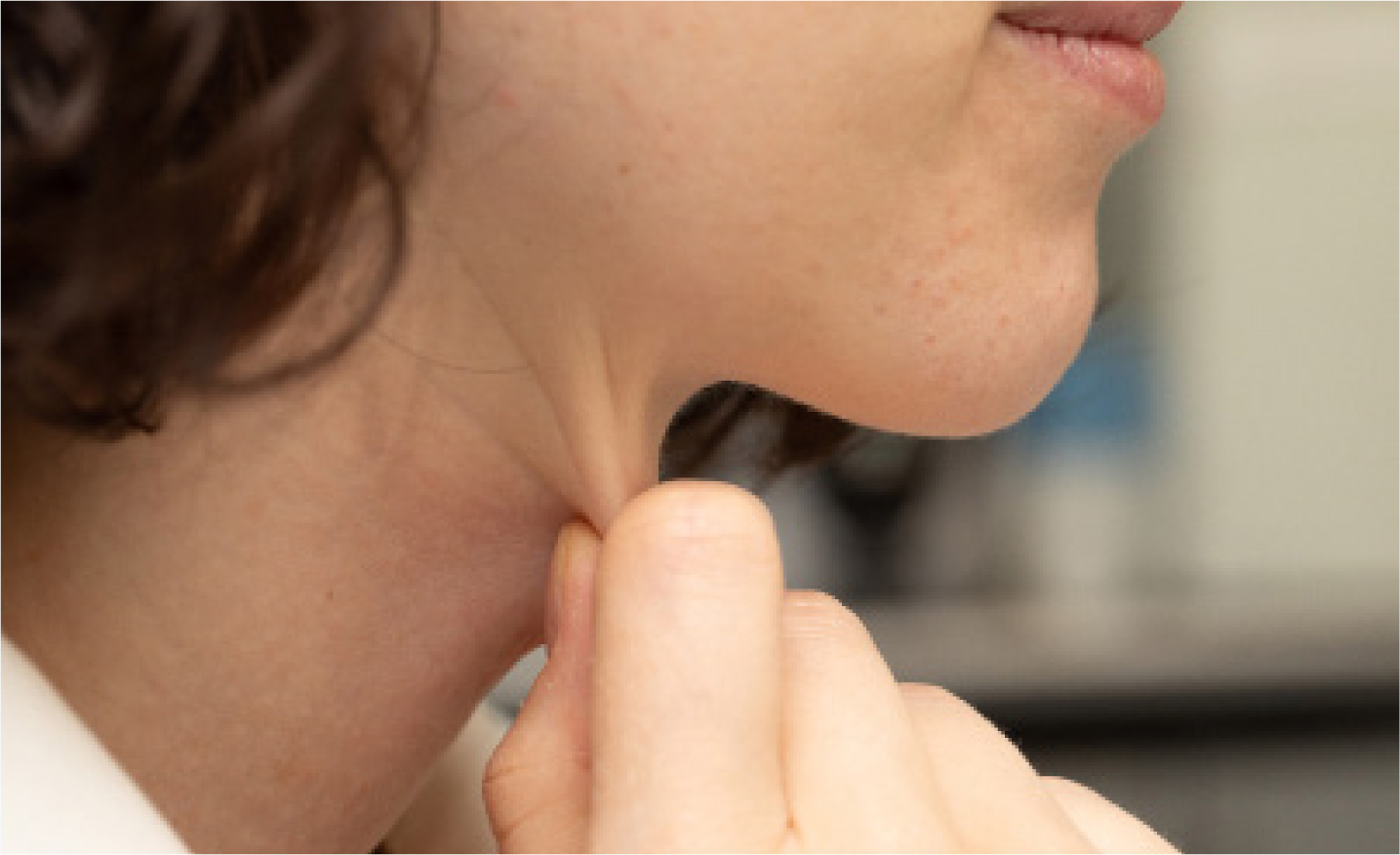
 The lockdown imposed as a result of the COVID-19 pandemic has seen a rise in body dysmorphic disorder cases
The lockdown imposed as a result of the COVID-19 pandemic has seen a rise in body dysmorphic disorder cases
Being in lockdown as a result of the coronavirus pandemic stoked fears in everyone. For some, it was the fear of losing loved ones or of contracting the virus themselves and becoming sick. Others feared the financial implications of being in lockdown: redundancy or their business failing, or finding a way to adapt while working from home and adequately homeschooling their children, while others feared a combination of all the above. Being contained at home with no escape from the stress and uncertainty of the worldwide situation made it easy to become transfixed on various hobbies, and lockdown saw a surge in DIY projects and home improvements as a corner of the home or garden became the focus during all those empty hours. Unfortunately for some people, it was not an area of their home or garden that became the transfixion during lockdown, but rather, an aspect of themselves that they believed needed to change—perhaps their weight or a facet of their appearance, such as the shape of their nose or skin texture. It has been reported that lockdown not only saw cases of those already suffering with body dysmorphic disorder (BDD) (Box 1) experience their symptoms worsen, but it also saw a rise in people developing the disorder as a result of the imposed restrictions. Before going into lockdown, it was estimated that 2% of the population in the UK suffered from BDD, which equates to one in every 50 people worldwide (2013). However, this number is expected to be higher, as many sufferers of BDD do not realise that it is a psychological disorder and are often too embarrassed or ashamed by their obsession with their appearance to report their symptoms to a doctor (Phillips, 2007). If all people with BDD were to be properly diagnosed, it is thought that the disorder would be more common than conditions such as anorexia nervosa and schizophrenia (Bjornsson et al, 2010). At the moment, it is too early to know the true rise in people with BDD following lockdown but reports from organisations such as the International OCD Foundation and the BDD Foundation indicate that it is staggering. A study conducted before lockdown revealed that 70% of patients with BDD seek some sort of cosmetic or aesthetic procedure, with under 10% of whom being satisfied with the results (Sarwar, 2002). It is because of this that BDD patients have always been problematic for the aesthetics sector. Cosmetic practitioners need to be aware not just of new clients coming into clinic expecting treatments for imagined flaws, but also of regular patients returning following lockdown and seeking advice and treatment for concerns that they have never mentioned or presented before.
Box 1.What is body dysmorphic disorder?Body dysmorphic disorder (BDD)or body dysmorphia is a mental health condition characterised by an individual's extreme fixation on one or more aspects of their appearance. Common areas of focus tend to be the face, nose, eyes, eyelids, hairline and/or chin; however, the fixation can move around the body and apply to multiple areas. BDD can occur at any age and affects both men and women, but most commonly occurs in teenagers and young adults. It can be a very distressing disorder and severely impacts the life of the individual and their daily functions, and, in some cases, can lead to suicide. Typically, these ‘flaws’ are not noticeable to others, meaning that the disorder often goes misdiagnosed and is misunderstood as being just an issue of vanity, which it is far from.
Lockdown body dysmorphic disorder explained
Before looking at the ways in which patients expressing signs of BDD can be helped in clinic, we need to understand how this rise in cases could have occurred. According to the fifth edition of the Diagnostic and statistical manual of mental disorders (DSM-5), BDD is related to other obsessive compulsive disorders due to the patients dominating fixation on one or more aspects of their appearance. The BDD Foundation advises that a lot of patients with BDD, as well as those in recovery, find that structure and routine helps them cope with the disorder. Many regularly attend therapy, go to the gym, eat at set times, spend time outdoors and just generally keep busy to distract themselves from intrusive thoughts about their appearance. Naturally, when COVID-19 struck and lockdown was implemented, these pre-lockdown routines and structures became unobtainable. With movement obviously restricted, general anxiety surrounding the pandemic rose and people were not able to go out or get to a doctor or counselling session, so it is quite easy to see how and why prior BDD patients started to relapse. Yet, how can the surge in new cases be explained, and what caused this prevalence of BDD in people who had never experienced it before? Unfortunately, when you think back to lockdown conditions, again, it is clear to see how this could have manifested.
» Patients will need the support of aesthetic practitioners, because it is highly likely that one of the first places they will be heading is to the open doors of an aesthetic or cosmetic clinic «
Firstly, there was the introduction of infinite amounts of time that no one knew what to do with. It was easy to spend a lot of this time on social media (a well-known trigger of BDD), comparing oneself with others and not acknowledging the filters and body shaping techniques applied to the glitzy images. Secondly, there was an absence of cosmetic appointments as a result of forced closure, which normally make one feel good about oneself and have a positive affect on mental health. Instead, the effects of injectables started to wear off, lasered hair grew back, skin broke out and these areas became a focus. Some will have tried home beauty treatments in place of their usual appointments or DIY haircuts, for example, which often go awry, worsening the feeling and increasing the level of attention given to the area. Some people had work invade their homes, a safe and sacred space usually kept private from colleagues and bosses. With meetings turning virtual and happening via video conference, the—at times, unflattering—front camera became the focal point of each meeting. Seeing one's appearance was unavoidable and being positioned next to other peoples faces made comparisons easy. Some people spent lockdown in solitude, missing the interaction with others who perhaps would quell their anxieties, while others had to move back to the family home or had all their family at home, each a stressful scenario that could ignite the need for control through food intake, alcohol consumption and/or an all-consuming fixation on oneself.
These are just a few examples, and it can be a combination of all these, one in particular or another reason entirely that kickstarted the disorder, but in highly stressful situations out of ones control, it is understandable how a disorder such as BDD can escalate rapidly. For those with the disorder that originated during lockdown, it may easily be assumed that once life returns to normal, so would one's thoughts and feelings about themselves. Unfortunately, not only is this not the case with a condition such BDD, but life has not returned to normal and shall not for the foreseeable future. If it ever does, there are still these varying levels of stress, uncertainty and a lack of structure. Therefore, patients will need the support of aesthetic practitioners, because it is highly likely that one of the first places they will be heading is to the open doors of an aesthetic or cosmetic clinic for a treatment in a bid to resolve the aspect of their appearance that is causing them distress.
 Common areas of focus tend to be the face, nose, eyes, eyelids, hairline and/or chin
Common areas of focus tend to be the face, nose, eyes, eyelids, hairline and/or chin
Screening new patients after lockdown
Patients presenting signs of BDD have always been a red flag in an aesthetic or cosmetic environment, and the vast majority of practitioners and treating physicians know not to treat someone who they believe is struggling with the disorder. Some will have learnt this the hard way by doing treatment and ending up with a problem patient on their hands who remains unsatisfied with the treatment and the way they look. From the statistic mentioned earlier whereby 70% of BDD patients will seek cosmetic interference, an alarming 50% of these actually get the procedure (Sarwar, 2002). Therefore, screening is imperative to avoid treating a patient with BDD and exacerbating their condition. There are a number of resources available to clinicians to help screen new patients for BDD; for those who did not have them available before the pandemic, it will certainly be worthwhile to invest in these now. For example, use specific pre-assessment questionnaires that are geared towards determining any unrealistic expectations and highlighting any specific preoccupations in the patient by asking questions such as how much their concern is affecting them and how desperate they are for treatment (Joseph et al, 2020). If this assessment indicates that the patient suffers with BDD, then an explanation needs to be made as to why treatment is being refused. Choosing the correct language in a conversation like this is very important, terms like ‘defect’ and ‘imagined flaw’, though diagnostically accurate, should be avoided as the client may feel as if the practitioner is minimising the impact that their condition is having on them. Using terms like ‘area of concern’ and ‘preoccupation ‘will validate their feelings and encourage the patient to understand their perception on a psychological level. The practitioner may then need to explain that they suspect that the patient has BDD and that they are not prepared to treat, because cosmetic intervention has been known to worsen the condition and how the patient feels about the area of concern. There are some resources listed in this article to help in this area and explain how the practitioner can voice their concerns to the patient, as well as where to direct them for treatment. The key point to remember is that if you feel nervous about treating a patient, trust your instincts and say ‘no’. Suspicion of BDD in a new patient has always been troubling, it is best to keep in mind that a physical solution like cosmetic intervention will never solve a psychological problem, which is the case with BDD. Therefore, BDD patients need to be directed to the right channels for assistance, and it is the practitioner's duty to help them do so.
Screening regular patients after lockdown
Naturally, it will be easier to decline treatment to new patients who are suspected to have BDD whereby a relationship is yet to be established, but the situation becomes harder with a regular patient with whom a relationship has been established (Box 2). A good place to start is by ensuring that all returning patients fill out another pre-assessment questionnaire, whether this is for the same treatment that they had previously received or for a new one. A questionnaire could even be created that is especially geared to treatment post-lockdown, which asks questions such as: ‘Did this area bother you before lockdown?’ ‘Did lockdown exacerbate this for you?’. This way, a dialogue is already tentatively opened up surrounding the effects of lockdown on mental health and our perceptions of oneself. Even with the use of questionnaires, practitioners and treating clinicians still need to ask themselves whether the patient has the capacity to give a truthful account of how they are feeling, as well as informed consent for the treatment they wish to have done. If the answer is ‘no’, then they should proceed calmly and respectfully explain why they will not be performing the treatment. As before, these conversations need to be handled delicately, calmly and respectfully, so that the patient is not made to feel negatively if you cannot see their concern.
Box 2.Warning signs to look out for in returning patients
- An obsession with getting treatment, maybe they tried something at home during lockdown like DIY skin peels or laser
- A fixation on a new area and asking your opinion on it
- Excessive grooming, maybe a lot more make-up than usual or other tools of camouflage (for example, sunglasses, baseball cap, etc)
- Repetitive behaviours, such as constantly moving back to the area, touching it, sitting or turning their head a certain way to hide their ‘bad side’.
It is useful to have some literature to hand that you can give the patient to support your conclusion and provide some additional information on the next steps in regard to medical intervention. You could even go down the route of writing referral letters, or making connections with a facility that treats patients for BDD to gain support, advice and to triage patients. It is a delicate area, and some practitioners may feel bullied by patients, especially if they have been treating them for some time, but they must stand their ground. As long as a support network is in place, it will help businesses, staff and patients in the long term.
There is still the possibility that any patient, old or new, will be reluctant to engage with the support that is recommended, and may well consult at other clinics to get treatment, which, unfortunately, is still an industry-wide concern.
Moving forward
Early recognition of BDD may help to prevent the progress of the condition and improve quality of life for the patient, so it is important to support them no matter how difficult the conversation becomes. As it is still so underdiagnosed, despite its apparent prevalence, more awareness would make the topic of BDD less confrontational when treatment is declined and less shameful for the patients. Getting involved in something like Mental Health Awareness Week (taking place in May in the UK and October in the US) or Suicide Prevention Day during September with a focus on BDD is an option to spread information about the condition. This will not just support patients, but will also encourage other clinics to look at the ways that they approach BDD patients, too. Readily available literature in and around the clinic would also help, as some patients may recognise their symptoms and be prompted to seek help on their own.
Life and work post-lockdown is a difficult time for everyone to navigate and there could be other manifestations appearing through patients as a result of the pandemic. Continue to be vigilant, be supportive to staff and patients and if you are unsure or need some more information, see the statistics (Box 3) and resources sections of this article for clinic support. As we have already learnt to do so well this year, the only way to get through this is together.
Box 3.Facts and statistics
- Some 48.9% of people with body dysmorphic disorder (BDD) also suffer with long-term addiction to substances (alcohol or drugs) as another coping mechanism to their distress and the anxiety that they feel (Bjornsson et al, 2010)
- People who already suffer with another obsessive compulsive-related disorder are at risk of developing BDD
- Some 80% of BDD patients experience suicide ideation (Philips, 2007)
- BDD is commonly found in clinical settings with 9–12% cases coming from Dermatology clinics and 3-53% cases in Cosmetic Clinics (Bjornsson et al, 2010)
- Treatments for BDD include: cognitive behavioural therapy (CBT), counselling, exposure therapy and serotonin reuptake inhibitors (SRIs). Some patients may need a combination of therapies to help, as well as ongoing support
- Cosmetic interference is ineffective for BDD patients.
Resources
Some practitioners will find handling their patients easier than others but regardless, body dysmorphic disorder (BDD) is a troubling disorder with not enough widespread awareness. Below are some resources and links that may be useful for those wanting to know more about treatment and BDD in general:
- The broken mirror: understanding and treating body dysmorphic disorder, by Dr Katherine Phillips
- The International OCD Foundation. https://iocdf.org/blog/2020/04/01/bdd-related-quarantine-tips-during-covid-19
- Mind Charity. https://www.mind.org.uk/information-support/types-of-mental-health-problems/body-dysmorphic-disorder-bdd/about-bdd
- The Body Dysmorphic Disorder Foundation. https://bddfoundation.org
- National Institute for Health and Care Excellence. Obsessive-compulsive disorder and body dysmorphic disorder: treatment. https://www.nice.org.uk/guidance/cg31
- The cosmetic procedure screening questionnaire (COPS). https://www.kcl.ac.uk/ioppn/depts/psychology/research/ResearchGroupings/CADAT/Links/Cosmetic-Procedures-Screening-Questionnaire-(COPS).pdf



